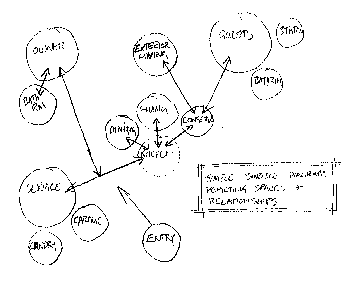Planning a New Home from Start to Finish
This exercise shows how a professional designer goes about planning a new home construction from start to finish.
This home is set in the Southern Hemisphere therefore it is built to the North sun not the South.
Throughout the sketches and photographs you will notice how the building is laid out and the various stages of construction.
You will note how a two dimensional plan takes form in three dimensions as construction takes place.
As an interior designer or trying to learn the art of design, one of the most fundamental skills is to think in three dimensions and visualise the project in it’s entirety before it is constructed.
The Design Brief
The client had found a site above a lake set in a valley surrounded by mountains. She wanted to take advantage of the sun and the views from as many aspects as possible.
While the site was set upon a hill, it was subject to afternoon winds but full use of outdoor living was to be attained without having to endure the wind.
The home was to be simple to live in and be able to have the guest bedrooms cut off from the rest of the living area, while the guest area wasn’t being used.
Three Bedrooms each with their own bathroom, a sunny conservatory area adjacent the kitchen were required, as well as a living area and open fire, a larger dining room to accommodate the dining table and chairs without encroaching on any of the other spaces and still be adjacent to the kitchen and living areas so that all three could be interactive and flow.
A laundry and double garage with a large loft above that could be converted into another apartment or flat at a later stage were all part of the brief.
The style was to be earthy, with a hint of Tuscan flavour and fit into the local surroundings making use of old railway sleepers and bridge beams to create an aged and solid feel.
The Design Resolve
The many aspects of a home like this needed to be compartmentalized and rather than take one large box an additive design was used.
This means taking the requirements or rooms that are needed and linking (adding) them together rather than taking a large box and splitting it up into compartments (divisible).
A simple bubble diagram was first used to determine the spaces required and their relationships.
You can see from the diagram below how simple an excercise it is, and you just keep reworking it until you get everyroom flowing as you want them.
It seems too simple and it is but it is a process that is often overlooked because it is simple and designers leap in and start planning the exterior look and then try and fit the rooms inside, this means that you are always going to have compromises.
Careful planning at the start of a project means that you will get the end result you desire, so don’t rush it imagine tyourself moving around the bubble diagram from room to room, think about bringing the groceries home and unloading them, doing the laundry and access to the outdoors to hang it out, cooking a meal and serving it in the dining room.
Work out scenarios and see if the spaces are working as a team. It is much easier to do this at the beginning than make changes once the framing is up!

A simple bubble diagram was first used to determine the spaces required and their relationships.

Developing the Spaces
The next step was to develop the spaces relationship to the exterior environment whilst simultaneously trying to confirm each spaces relationship to the other and create a harmonious flow.
After that the jigsaw took shape and the size of the spaces were determined.
The sketch plan then took form and while there were a number of different layouts along the way, this was the basic process of space planning.
The elevations of the home were developed through sketching and generating ideas. I don’t think that there is too much of a formal way of doing this.
My method is to sketch and experiment until a form that is pleasing takes shape.
You can use scaling methods such as the golden section and that will help create formality and create a pleasing aspect to the eye but the overall form and detail is a combination of the plan and it’s relationship to the elevations as well as the interior three dimensional feeling or quality of a room.

Formalizing the relationships and the spaces in relation to the exterior

The final sketch plan.
The next section shows the house under construction and points out various construction methods as well as providing design tips and design features.
